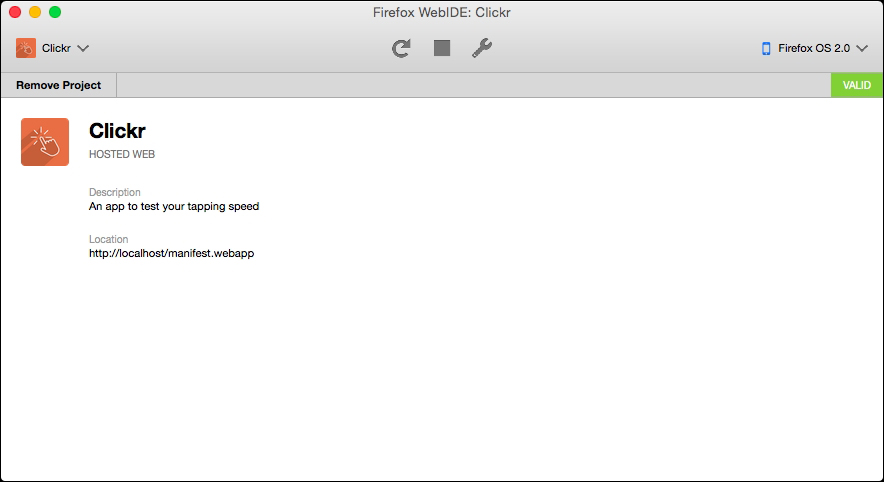As promised, we will now run this application as a hosted application. For this purpose, I will use XAMPP for Mac OS X to create a web server that will allow me to serve the hosted application.
Note
XAMPP is also available for Windows and Linux; you can download XAMPP from https://www.apachefriends.org/download.html.
Let's place all the application files in the htdocs folder and start the apache server. This will allow us to see the application when we type either localhost or 127.0.0.1 in our web browser.
Now, open WebIDE and click on New App. Select Open Hosted App. This will ask you to enter the manifest URL of the hosted app. Go ahead and enter the manifest URL of your application, which should be http://localhost/manifest.webapp. This will open your application along with all of its details, in the WebIDE.

You will notice that the application type has now changed to HOSTED WEB. As you can probably figure out, this is because we are now serving...



